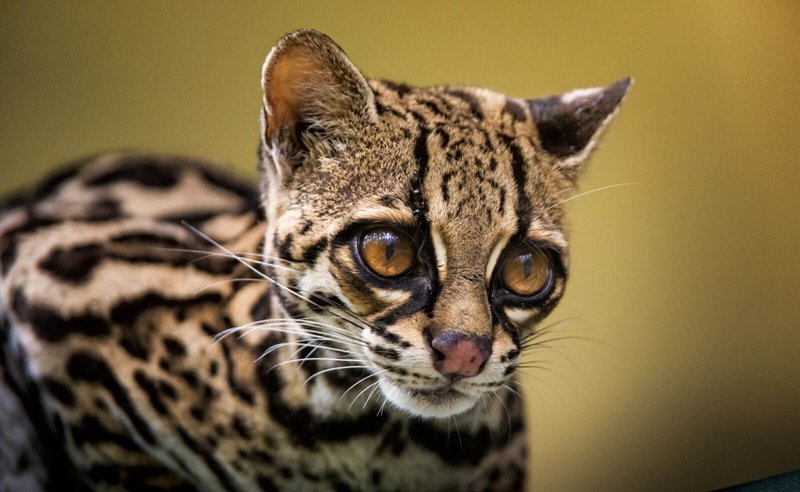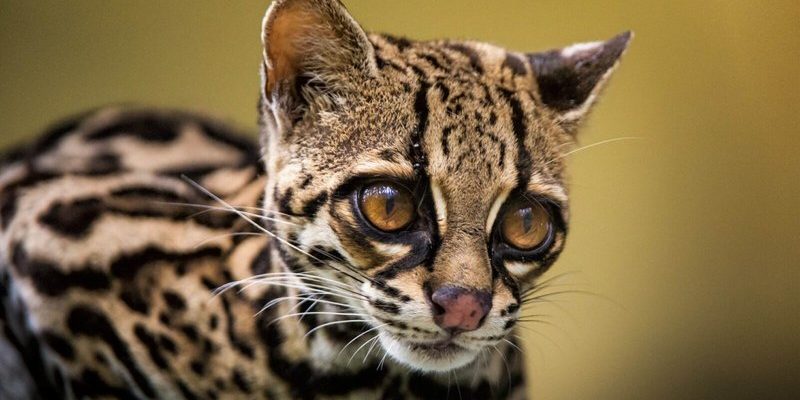
The Margay is a fascinating little creature that might just spark your curiosity. Imagine a cat that’s built for the trees, with the agility to leap effortlessly from branch to branch. Native to Central and South America, these cats are often compared to their larger cousins, the ocelot and the jaguar, but they have their own unique charm. With a playful spirit and stunning spotted coat, the Margay isn’t just another wild cat; it’s an expert acrobat of the forest.
One of the most striking features of the Margay is its ability to mimic the calls of other animals. This skill helps it hunt more effectively, making it a true master of stealth. Picture a sneaky ninja that can blend into its surroundings while keeping an ear out for its next meal. Whether you’re an animal lover, a curious explorer, or just someone interested in wildlife, there’s plenty to learn about this remarkable feline.
Physical Characteristics
The Margay is a small to medium-sized wild cat, measuring about 18 to 30 inches in length, with a tail that can be just as long. To give you an idea of its size, think about a domestic cat, but a little longer and with a more slender build. Its fur is thick and soft, often resembling the pattern of a leopard, which helps it camouflage perfectly within its jungle environment. The fur is usually a mix of light brown and yellowish hues with numerous black spots—nature’s own design for stealth.
Another fascinating aspect of the Margay’s anatomy is its flexible ankles. These allow it to climb down trees headfirst, a skill that not many cats possess. Most felines can only descend in a backwards motion. This unique feature gives the Margay a significant advantage when hunting or escaping danger. Imagine being able to scale a tree and dash down without a backward glance—how cool is that?
Habitat and Distribution
Margays thrive in a variety of habitats but are most commonly found in tropical rainforests. They prefer areas with dense vegetation where they can easily hide from predators and stalk their prey. These cats are primarily distributed from Mexico all the way down to Argentina, with their range covering much of Central and South America. You might find them in both lowland and montane forests, where the climate remains warm and humid throughout the year.
Interestingly, Margays are also quite adaptable. They can live in secondary forests or areas that have been disturbed, as long as there is sufficient cover. This flexibility in habitat choice helps them cope with environmental changes and human encroachment. However, deforestation poses a significant threat to their populations, so conservation efforts are essential to ensure their survival.
Diet and Hunting Behavior
As carnivores, Margays primarily eat small mammals, birds, and reptiles. Their favorite snacks include rodents, monkeys, and even some types of birds. Since they are nocturnal hunters, they are out and about during the night, using their keen eyesight and exceptional hearing to locate prey. Picture yourself in the dark, stealthily stalking your next meal—that’s exactly what a Margay does!
The hunting technique of the Margay is nothing short of impressive. Often, they will leap from a tree branch to surprise their prey. They can even mimic the calls of other animals to lure them in. This unique skill is like a clever tactic in the game of hide-and-seek. The combination of stealth, agility, and cunning makes the Margay a fierce predator in its environment.
Social Behavior and Reproduction
Margays are generally solitary animals, only coming together during mating season. This is when the male and female will engage in a courtship display, often involving vocalizations and scent marking. After mating, the female will take on the role of a single parent, raising her kittens alone. A typical litter consists of one to three kittens, which are born blind and rely entirely on their mother for survival in the early weeks of life.
Once the kittens are old enough, they begin to explore their surroundings, mastering climbing and hunting skills. This developmental stage is crucial, as it equips them with the abilities they’ll need to survive in the wild. As they grow, the mother will teach them everything from hunting techniques to where they can safely roam. It’s a world of adventure for these little furballs as they learn the ropes of life in the jungle.
Conservation Status
Unfortunately, the Margay faces several threats that have led to a decline in its population. Habitat loss due to deforestation and human encroachment is the primary cause. These precious cats depend on dense forests, and when their homes are cut down, their chances of survival diminish. Additionally, they are sometimes hunted for their beautiful pelts or captured for the illegal pet trade, further endangering their species.
Efforts to conserve the Margay include habitat protection and the establishment of wildlife reserves. Organizations are working to raise awareness about the importance of preserving this magnificent species and its habitat. It’s a collective responsibility to protect these wild cats so that future generations can also marvel at their beauty and grace.
Interesting Facts
| Scientific Name: | Leopardus wiedii |
| Size: | 18-30 inches long (excluding tail) |
| Weight: | 8-20 pounds |
| Habitat: | Tropical rainforests, scrub forests, and grasslands |
| Diet: | Small mammals, birds, reptiles |
| Lifespan: | Up to 15 years in the wild |
| Conservation Status: | Near Threatened |
FAQ
What makes the Margay different from other wild cats?
The Margay is unique due to its incredible climbing abilities and flexible ankles, which allow it to descend trees headfirst. Unlike many other cats, it can mimic the calls of various animals to lure in prey, showcasing its adaptability and cunning nature.
Are Margays good pets?
While they may look cute, Margays are wild animals and should never be kept as pets. They have specific needs that are difficult to meet in a domestic setting. Additionally, keeping wild cats as pets can impact conservation efforts and lead to legal issues.
How do Margays communicate with each other?
Margays use a range of vocalizations, including growls, purrs, and meows, to communicate. They also use scent marking to establish territory and signal their presence to other cats. This combination of vocal and olfactory communication helps them maintain social structures in the wild.
What is the average lifespan of a Margay?
In the wild, Margays typically live up to around 15 years, although this can vary based on environmental factors and health conditions. In captivity, with proper care, they may live even longer, but they thrive best in their natural habitats.
Where can I find Margays in the wild?
Margays are primarily found in Central and South America. They inhabit tropical rainforests, cloud forests, and scrub forests, with a range that extends from Mexico down to Argentina. If you’re interested in spotting one, visiting national parks in these regions can increase your chances.
What do Margays eat?
Margays primarily feed on small mammals, birds, and reptiles. Their diet is diverse, but they tend to target species that are easily catchable within their forested habitats. Their hunting skills enable them to adapt to the availability of prey in their environment.
Are there conservation efforts in place for Margays?
Yes, various conservation programs focus on protecting the Margay’s habitat and raising awareness about their plight. These efforts include establishing wildlife reserves and promoting sustainable practices among local communities to help reduce habitat destruction.
How does the Margay’s size compare to other wild cats?
The Margay is smaller than other well-known wild cats like the ocelot and jaguar, making it one of the smaller cat species in the Americas. Its size allows it to be agile in the trees, which is essential for its survival.
What threats do Margays face in the wild?
The Margay faces numerous threats, primarily from habitat loss due to deforestation and the illegal wildlife trade. These factors contribute to their classification as “Near Threatened,” emphasizing the urgent need for conservation efforts.
Can Margays be found in zoos?
Yes, Margays can be found in some zoos and wildlife sanctuaries, where they are part of breeding programs aimed at preserving the species. These facilities also educate the public about the importance of conservation and the challenges facing wild cats.
How do Margays adapt to their environment?
Margays have several adaptations that help them thrive in their jungles, including their excellent climbing skills and exceptional stealth. Their flexible ankles allow them to navigate trees easily, while their spotted coat provides perfect camouflage, enabling them to blend into their surroundings.

